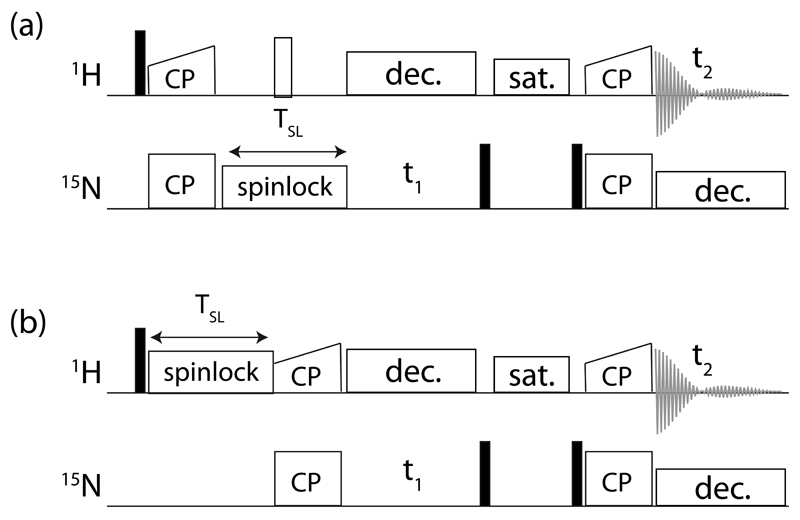Figure 2.
Pulse sequences used in this study for measuring 1H and 15N R1ρ relaxation, using 1H-to-15N CP transfers (out and back). A solvent suppression period (“sat.”), using a composite-pulse-decoupling (WALTZ16) proton saturation element while the 15N coherence is stored along +z, is denoted used before the back-transfer to 1H for detection. 15N decoupling (WALTZ16) is applied during proton detection with an RF field strength of 3 kHz, and WALTZ16 proton decoupling is used during the indirect 15N evolution period. Typical 15N RF field strengths during CP were set to 35 kHz, and the 1H RF field was chosen to match the n=1 Hartmann-Hahn condition (i.e. ~85 kHz at 50 kHz MAS), with a 90-100% linear ramp.

